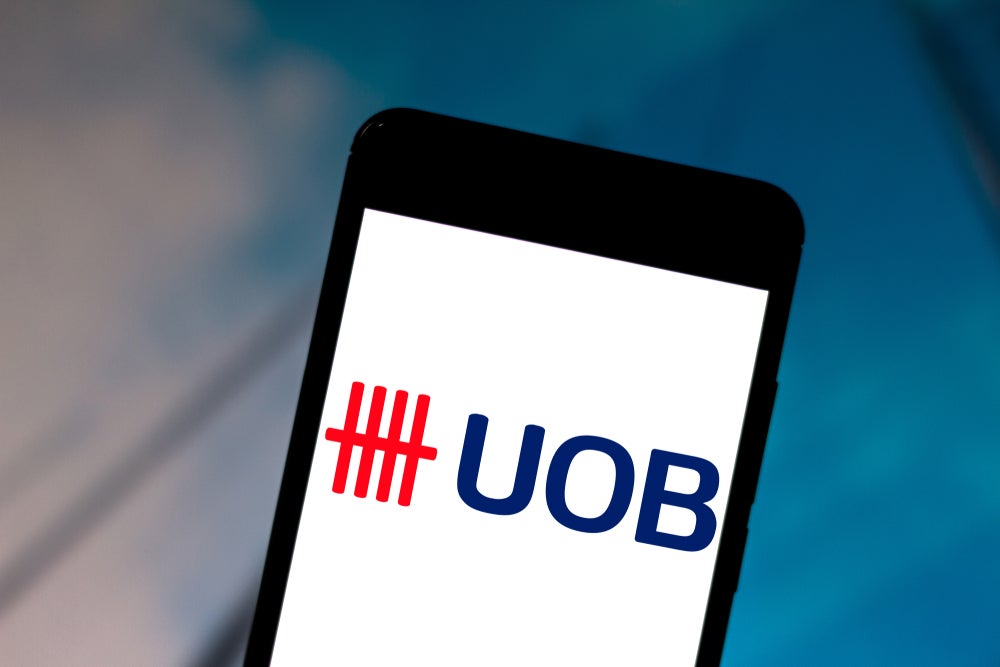As the market opens up to competition between
incumbent players and foreign groups, banks in Vietnam are looking
towards consumer banking as a key earnings driver. But there are
many challenges – in particular, high cash usage, low banking
penetration and dated infrastructure. Titien Ahmad
reports.
Vietnam has long been touted as the next Asian tiger and its steady
growth, despite the global financial crisis, has made it even more
attractive.
Its economy, says Marc Djandji, head of
research at Horizon Securities, has been quite resilient to the
global financial crisis for a number of reasons: there is little
foreign debt compared to other Asian markets and Vietnam’s exports
are commodities such as food, pepper, oil and gold – or what he
calls “discretionary-type exports”.
“We have not seen a major loss in consumer
confidence,” added Djandji.
“Domestic demand is still driving the economy
and it’s helping on both the corporate and consumer side. There was
more of an issue last year when the consumer price index had grown
by 28.3 percent [in August] and the food index had increased by
even more.
How well do you really know your competitors?
Access the most comprehensive Company Profiles on the market, powered by GlobalData. Save hours of research. Gain competitive edge.

Thank you!
Your download email will arrive shortly
Not ready to buy yet? Download a free sample
We are confident about the unique quality of our Company Profiles. However, we want you to make the most beneficial decision for your business, so we offer a free sample that you can download by submitting the below form
By GlobalData“But since then things have improved. GDP
growth is not going to be 7 percent or 8 percent; it will be about
3 percent to 4 percent but people are putting things in
perspective… [But] the mood is still very uplifting.”
Vietnam’s banking system was established in
its current form relatively recently: in 1990. The State Bank of
Vietnam became the central bank and its credit function was
transferred to five state-owned commercial banks: Vietnam Bank for
Agriculture and Rural Development (VBARD), Vietnam Bank for
Investment and Development (BIDV), Bank for Foreign Trade of
Vietnam (Vietcombank), Vietnam Industrial and Commercial Bank
(VietinBank), and the Mekong Housing Bank.
Even now, state banks have a significant share
of the market – estimated at up to 65 percent – while the smaller
joint stock or foreign banks scramble for the remaining slice of
the pie. And although the focus has been on corporate lending or
funding state-owned enterprises, many banks are turning to retail
and private banking as the next big hope as the market is still
very under-penetrated.
According to Pham Thuy Nga, director of
policy, research and development at Vietcombank, capturing more
target customers is the “goal of every bank”.
He added: “Consumer banking plays a central
role in leveraging the customer base, in market expansion and in
improving competitive advantage, while corporate banking has the
implicit threat of a limited customer base.”
Djandji at Horizon Securities said the biggest
reason why the consumer segment has not been the focus of lending
in Vietnam is simple: bank penetration is still not very high in
the country at less than 10 percent of the population.
“It is still largely a cash economy,” he
said.
Bac Tran Ha, chairman of BIDV, Vietnam’s
second largest state-run bank, said BIDV’s plan for the next period
is to focus on retail banking because of a high economic growth
rate and a large population with an increasing demand for banking
services.
“Furthermore, the retail market is less risky
and provides more stable income,” he said. “BIDV has also
prioritised improving its competitiveness in retail banking segment
by enhancing its banking features such as e-banking, debit card,
credit card; developing POS, CDM network, consumption loans and
payment products.”
Speaking to RBI, Ha is optimistic
about the opportunity a previously untapped retail banking market
provides.
“[The] Vietnamese retail banking segment is
expected to have high growth in the coming years as the majority of
Vietnamese have yet been accustomed to basic banking services,” Ha
said.
“Statistics show that merely 10 percent out of
85 million Vietnamese have bank accounts. Increasing demand for
banking services is supported by changes in population structure,
booming industrial zones and urbanisation; escalation in the number
of enterprises and the Vietnamese getting higher income and better
education.”
Branches, he adds, remain the key customer
contact point, and setting up a branch is driven as much by the
potential appreciation in land value as it is by the potential
business in the area.
According to Ha, “direct transaction at banks
currently remains the preferred channel for customers. BIDV has a
second largest banking network in the Vietnamese banking system. To
date, BIDV has in total 108 branches, 303 transaction offices, 103
saving points, 1,000 ATM machines, and 850 POS.
“Retail branch network and transaction offices
continue to grow, which appeal to customers with the habit of
performing direct transactions at banks.”
And despite foreign groups such as HSBC and
Standard Chartered taking stakes in a number of banks over the past
two years, it is the country’s state-owned banks, such as BIDV,
that are well-placed for retail banking with their extensive
distribution network of at least 2,000 branches each and
significant market share in a market where the majority of the
population still live in rural areas.
Some market observers are also placing their
bets on the joint stock and foreign banks as regulations change and
allow them to open up more branches.
“State banks are the largest banks in the
country and historically they have been lending to other state
enterprises. Banks are being privatised but there is still a lot of
inefficiencies within the system,” said Djandji.
“Foreign banks will have a lot of
opportunities to grow as the local banks are not competing at that
level yet and also because of the low penetration at the moment.
The local joint stock banks have their distribution network so it’s
a question of having these banks up there in the level of
efficiency and technology and usage,” he continued.
Customer segmentation is the
answer
One of the higher profile joint stock
banks, sixth-largest Sacombank has foreign strategic shareholders
such as IFC/World Bank, Dragon Capital UK and ANZ Bank that
collectively own a 30 percent stake – the maximum allowed to
foreign shareholders.
With 250 branches in 44 provinces, Sacombank
focuses on specific target markets to enable it to corner
profitable slices of the market.
Speaking to RBI, Tran Xuan Huy, chief
executive officer of the bank said: “Sacombank sees customer
segmentation as the answer to Vietnam banking and has thus created
unique markets such as the small business loans, Chinese-speaking
branches and ladies-only branches.”
“The bank has branches in Ho Chi Minh City
that cater directly to the Chinese-speaking business community,
visitors and residents alike, and are staffed by Vietnamese who can
speak at least two Chinese dialects. The ladies-only branches
target women business owners. The business is thriving at these
branches as there are many enterprising women in Vietnam,” she
continued.
Many local women have gone into business to
support the family in post-war Vietnam. Although Sacombank is
aggressively expanding its branch network, Tran is also investing
in banking through the mobile phone as the next major channel for
customer engagement.
“The population in Vietnam is reaching 90
million and it is reported to have 94 million phone accounts but
only 20 million bank accounts. How nice it would be if bank
transactions such as funds transfer can be facilitated through the
phone. The benefits may include cutting down the cost of
transactions as well as enabling access to banking services by a
large rural population,” he said.
Lack of information
transparency
The challenge in an emerging retail
banking market such as Vietnam is the many entrants eager to have a
share of the market at a time when the regulator is opening up the
sector by loosening branch limitations on foreign banks and
encouraging foreign investment in local institutions.
BIDV chairman Ha said: “Competition among
banks in Vietnam has increased significantly due to the
equalisation process of state-owned banks, strong growth of
joint-stock commercial banks and penetration of foreign banks.
“Competitors have varied widely with
competitive edges in terms of technology, financial resources and
operation management. Banks are fiercely competitive, not only in
adopting price policies regarding to interest rates or service fees
but also in dominating the retail banking segment with a variety of
new products and services.”
The lack of information transparency has also
been a challenge in setting up retail banking operations especially
in managing loan portfolios and credit risk. The existing credit
bureau covers an estimated 15 percent of adults and there is a weak
bankruptcy process.
“There is also insufficient and inadequate
customer information as customers are not ready to provide
information to banks due to psychological and habitual factors.
This makes it difficult to do segment marketing and sell unsecured
lending products,” concluded Pham at Vietcombank.
RESULTS
Sacombank
bullish
According to a statement on
Sacombank’s website, Tran Xuan Huy, has said that for the first
half interim period, the bank earned VND900 billion in pre-tax
profit (excluding profits of member companies). The figure is
expected to exceed the targeted VND1.6 trillion for the whole year,
he added.
The biggest contribution to Sacombank’s profit
came from credit and lending activities. Notably, the bank’s
outstanding loans reached over VND42 trillion in first two
quarters. Year-on-year growth of outstanding loans are targeted to
grow 50 percent for fiscal 2009, added the statement.
In the first quarter of 2009, the bank’s
post-tax profit rose 110 percent to VND297.4 billion from the
previous quarter. Total assets increased from VND68.4 trillion as
of 31 December 2008 to VND74.5 trillion as of the end of March, a
rise of 9 percent.







